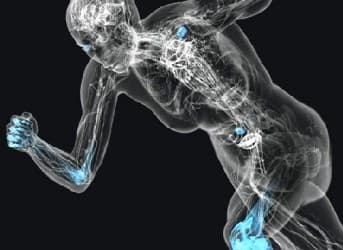Metabolism 101 Video Series #1
Why do you want to pay attention to all of the videos?
✅Learn the basic concepts of metabolism, help you to be a smarter eater of food and athlete
✅Learn how to take these principles and apply them to you as an individual and your current health situation
✅Learn how to take these principles and apply them to your current A Race and training / racing situation
✅Learn how to correct imbalances or to not CAUSE them
✅Learn how to manage your own ENERGY WELL, feel great, preform great
✅Learn how to drop weight if you want, get strong if you want, BE EPIC
REAL LIFE EXAMPLES
Topic: Electrolyte Management: Sodium, Potassium, Magnesium
- Your nervous system is broken up into two parts, flight or flight and rest and digest. Or sympathetic and parasympathetic nervous system. Being low in sodium can cause your parasympathetic nervous system to be dominant, thus resulting in low blood pressure.
- Not ingesting enough sodium during exercise can cause a decrease in the ability to contract muscles, aka performance goes down. As well as your body’s ability to keep itself cool. And can also cause decrease in cognitive function, so maybe you have balance issues on the bike or you make poor decisions or get lost.
- Magnesium is responsible for so many activities in the body, it is outstanding. These span from activation ATP to increasing glucose availability to reducing inflammatory responses to facilitating the clearance of lactate acid to increasing melatonin to help you sleep to increasing insulin sensitivity to supporting stable and regular heart rhythm to turning off muscles contractions. What does this actually mean? Without the right kind of magnesium in our body (not just your blood), you will experience fatigue, sore muscles, sluggish muscles, crappy sleep, possible irregular heart rhythms, cramping.
Topic: Macro nutrition intake balance:
- The understand of the macro nutrients needs to be at the functional level. Carbs and Fats provide ENERGY and proteins provide building blocks. Proteins, or the resulting amino acids, provides the building blocks for body structure and strength, hormones, cell signaling molecules, enzymes, immune function. Protein CAN be used for energy needs as well. So if you are low carbing it and not providing enough fat for instance, aka doing just LOW calorie, the body will use it’s own protein to provide energy to go about your day or it will use your leg muscle (or your heart muscle), bone or connective tissue to make enough hormones/melatonin to get that crappy sleep or feed your carb hungry brain.
WHAT ARE THE MACRO NUTRIENTS
Forget about the food pyramids. And the plethora of eating diets. Let’s go geeky sciency for a second. Let’s explore how the body is actually designed.
🌟🍎🥦CARBOHYDRATES 🥨🍇🍪
Carbohydrates provide your body with energy. The simplest are sugars, like glucose, fructose, sucrose and lactose. Complex carbohydrates, like starch, are made up of lots of sugar molecules joined together. The ‘identity tags’ (antigens) on the surface of all cells are made from carbohydrates joined to proteins. These molecules are essential for cells to recognize each other and to keep the different parts of your body working together.
Carbs are the body’s most important energy source. This is how it is designed. However, we might need to reconsider how many we eat and if the kinds that we are eating actually do harm. Like in the case of High Fructose Corn Syrup.
Carbs are separated into groups based on who many saccharides they they are made up of. The simplest, most fundamental unit of a carbohydrate is a monosaccharide—a single sugar molecule—made of carbon, hydrogen, and oxygen atoms.
Sugar, Starch, Fiber
The human body needs all three types of carbs—sugar, starch, and fiber—to function well, according to the U.S. National Library of Medicine because they all get used by our bodies in different ways. Now, broadly speaking, sugars and starches get broken down for energy usage and storage in our cells, tissues, and organs, per the U.S. National Library of Medicine. But fiber is the odd carb out: It actually passes through the body mostly undigested, but helps regulate things like digestion, blood sugar, and cholesterol. More on carbs later.
🐿 🥓🥓 FATS 🍗🥓🌟
Triglycerides, cholesterol and other essential fatty acids—the scientific term for fats the body can’t make on its own—store energy, insulate us and protect our vital organs. They act as messengers, helping proteins do their jobs. They also start chemical reactions that help control growth, immune function, reproduction and other aspects of basic metabolism.
The cycle of making, breaking, storing and mobilizing fats is at the core of how humans and all animals regulate their energy. An imbalance in any step can result in disease, including heart disease and diabetes. For instance, having too many triglycerides in our bloodstream raises our risk of clogged arteries, which can lead to heart attack and stroke.
Fats help the body stockpile certain nutrients as well. The so-called “fat-soluble” vitamins—A, D, E and K—are stored in the liver and in fatty tissues.
The brain is very rich in fat (60%) and has a unique fatty acid composition; docosahexaenoic acid (DHA) is the major brain fatty acid. The lipids of the retina also contain very high concentrations of DHA. More on Fats later.
🐿 🥓🥓 PROTEINS 🍗🥓🌟
Protein is an important component of every cell in the body. Hair and nails are mostly made of protein. Your body uses protein to build and repair tissues. You also use protein to make enzymes, hormones, and other body chemicals. Protein is an important building block of bones, muscles, cartilage, skin, and blood.
Along with fat and carbohydrates, protein is a “macronutrient,” meaning that the body needs relatively large amounts of it. Vitamins and minerals, which are needed in only small quantities, are called “micronutrients.” But unlike fat and carbohydrates, the body does not store protein, and therefore has no reservoir to draw on when it needs a new supply.
There are 20 different amino acids in total, which can be broken down into two main groups, per the FDA. Nine of the 20 are what are referred to as essential amino acids, meaning that the body is unable to produce them itself and so we must get them from food. The other 11 are nonessential because the body is able to synthesize them out of the essential amino acids or the normal process of breaking down proteins, according to the U.S. National Library of Medicine. Many of these nonessential amino acids are also considered conditional amino acids, because they can become essential in rare, severe instances when the body is unable to synthesize amino acids properly, per the U.S. National Library of Medicine.
In addition to muscle growth, protein is essential to the growth and repair of virtually all cells and body tissues—from your skin, hair, and nails to your bones, organs, and bodily fluids, according to the FDA. That’s why it’s especially important to get enough of it during developmental periods like childhood and adolescence.
Protein also plays a role in crucial bodily functions like blood clotting, immune system response, vision, fluid balance, and the production of various enzymes and hormones, per the FDA. And because it contains calories, it can provide the body energy for storage or use. More on protein later.










